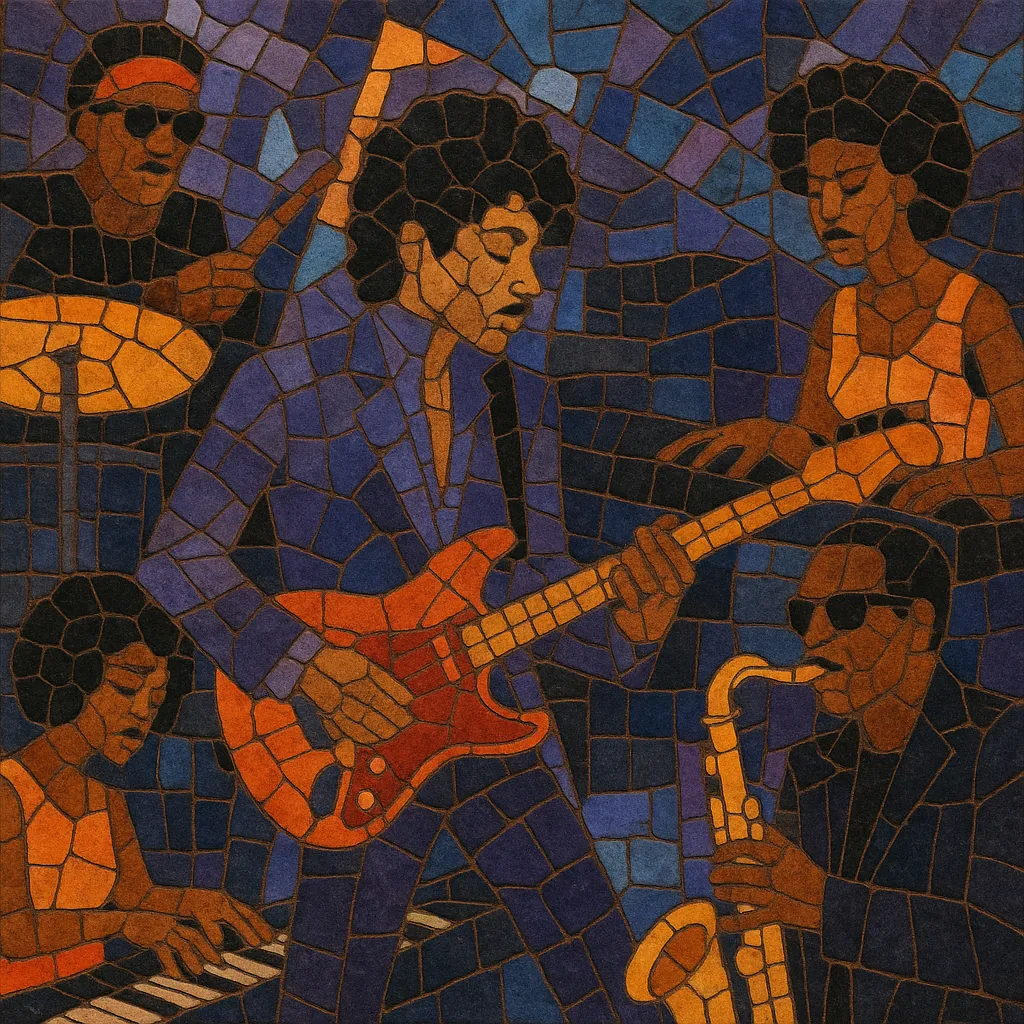
The Minneapolis sound is a lean, synth-forward fusion of funk, rock, R&B, and new wave that emerged from Minneapolis in the late 1970s and broke through in the early 1980s.
It is defined by punchy drum-machine grooves (famously the Linn LM-1), bright rhythm guitars, prominent synth bass replacing traditional horn sections, and minimal yet hook-heavy arrangements.
Vocals often feature stacked harmonies and call-and-response, while lyrics tend toward sensual, playful, and streetwise themes with occasional social commentary.
The style was pioneered by Prince and a close circle of collaborators, and it reshaped mainstream pop and contemporary R&B production for decades.
The Minneapolis sound coalesced around Prince and his North Minneapolis peers, including André Cymone and members who would become The Time. Early albums like Dirty Mind (1980) and Controversy (1981) distilled funk into a tighter, synth-laden format, swapping horn sections for Oberheim- and Prophet-style polysynths and anchoring everything with the Linn LM-1 drum machine. This stark, neon-toned hybrid drew equally from James Brown funk, Sly & The Family Stone, new wave minimalism, and arena-ready rock guitar.
With 1999 (1982) and Purple Rain (1984), Prince—and bands in his orbit such as The Time, Vanity 6, Apollonia 6, The Family, Jesse Johnson’s Revue, and Sheila E.—propelled the sound into the pop mainstream. The approach emphasized crisp, quantized drums; percussive synth stabs; and catchy, provocative hooks. Alumni Jimmy Jam & Terry Lewis carried core elements into their hit-making production work, most famously on Janet Jackson’s Control (1986), which helped codify the sound’s influence on modern R&B and dance-pop.
Although the specific Minneapolis scene peaked in the mid-1980s, its sonic DNA—tight drum-machine programming, synth bass, guitar bite, and hook-forward minimalism—permeated new jack swing, late-1980s and 1990s pop-R&B, and later alternative R&B. The aesthetic also informed dance-rock and electropop, and it remains a reference point for artists who blend funk’s rhythmic snap with pop immediacy and new wave sheen.
Use a drum machine as the rhythmic centerpiece, ideally emulating the Linn LM-1 or LinnDrum with tight, dry kicks, snares, and handclaps. Combine bright, chorused rhythm guitar with prominent synth bass (Oberheim, Prophet-5, Juno, or Minimoog). Replace traditional horn sections with sharp, percussive poly-synth stabs and simple but melodic lead lines.
Program syncopated, sixteenth-note hi-hats with a crisp snare on 2 and 4. Keep patterns minimal but danceable, occasionally using a straight four-on-the-floor for choruses. Accents, stop–start breaks, and call-and-response drum fills heighten tension and release.
Favor diatonic progressions, two- to four-chord vamps, and colorful extensions (7ths, 9ths, sus2/add9). Melodies should be hook-focused and direct, often doubled or harmonized. Use keyboard stabs voiced tightly (e.g., root–fifth–ninth) to punctuate the groove.
Aim for spacious minimalism: few parts, each with a distinct frequency slot. Pan rhythm guitars and synth stabs for width, keep drum elements upfront and dry, and apply selective gated or plate reverb for impact. Employ stacked backing vocals and occasional spoken asides. Dynamic breakdowns and dramatic stops are signature devices.
Write flirtatious, playful, and sensual lyrics with sly humor or streetwise cool. Vocals can be a mix of smooth lead, falsetto inflections, and tight group harmonies. Performance should feel confident and slightly edgy, balancing funk’s swagger with pop accessibility.

